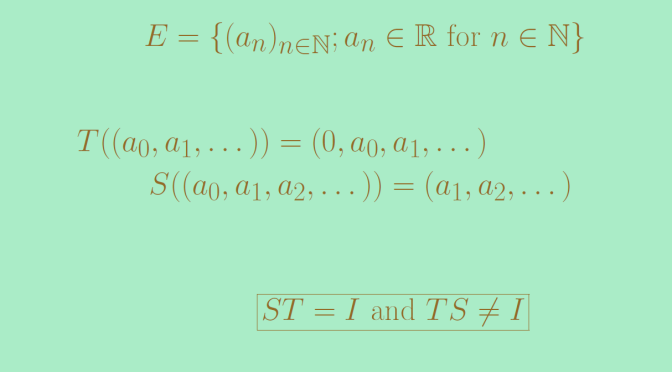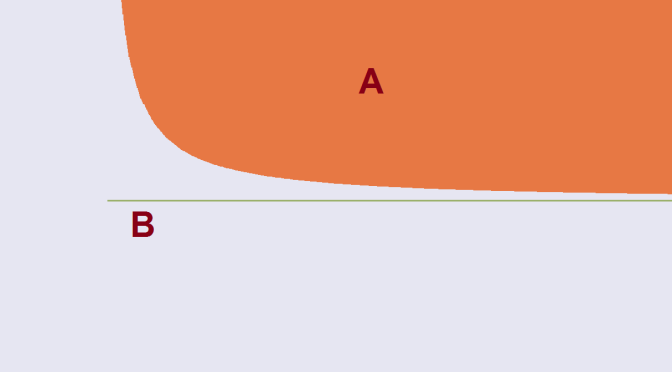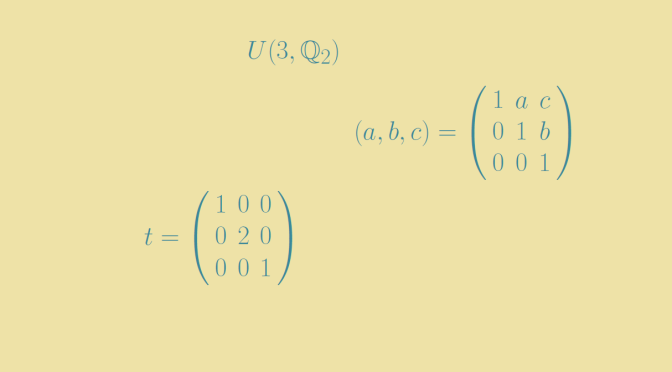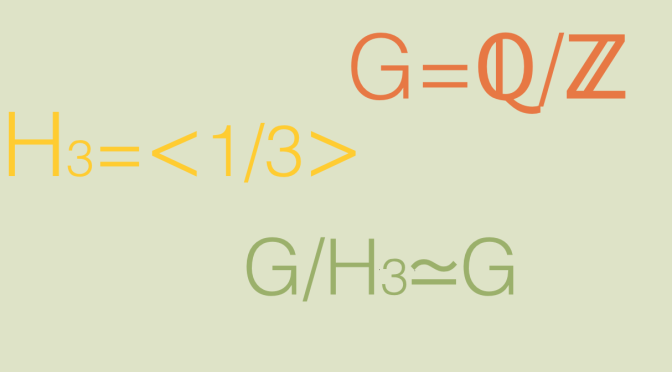
We consider a vector space \(E\) and a linear map \(T \in \mathcal{L}(E)\) having a left inverse \(S\) which means that \(S \circ T = S T =I\) where \(I\) is the identity map in \(E\).
When \(E\) is of finite dimension, \(S\) is invertible. Continue reading A linear map having a left inverse which is not a right inverse →

We take a metric space \((E,d)\) and consider two closed subsets \(A,B\) having a distance \(d(A,B)\) equal to zero. We raise the following question: can \(A\) and \(B\) be disjoint – \(A \cap B=\emptyset\)? Continue reading Two disjoint closed sets with distance equal to zero →

Let \(\mathbb{Q}_2\) be the ring of rational numbers of the form \(m2^n\) with \(m, n \in \mathbb{Z}\) and \(N = U(3, \mathbb{Q}_2)\) the group of unitriangular matrices of dimension \(3\) over \(\mathbb{Q}_2\). Let \(t\) be the diagonal matrix with diagonal entries: \(1, 2, 1\) and put \(H = \langle t, N \rangle\). We will prove that \(H\) is finitely generated and that one of its quotient group \(G\) is isomorphic to a proper quotient group of \(G\). Continue reading A finitely generated soluble group isomorphic to a proper quotient group →

The basic question that we raise here is the following one: given a group \(G\) and a proper subgroup \(H\) (i.e. \(H \notin \{\{1\},G\}\), can \(G/H\) be isomorphic to \(G\)? A group \(G\) is said to be hopfian (after Heinz Hopf) if it is not isomorphic with a proper quotient group.
All finite groups are hopfian as \(|G/H| = |G| \div |H|\). Also, all simple groups are hopfian as a simple group doesn’t have proper subgroups.
So we need to turn ourselves to infinite groups to uncover non hopfian groups. Continue reading A (not finitely generated) group isomorphic to a proper quotient group →
Mathematical exceptions to the rules or intuition




